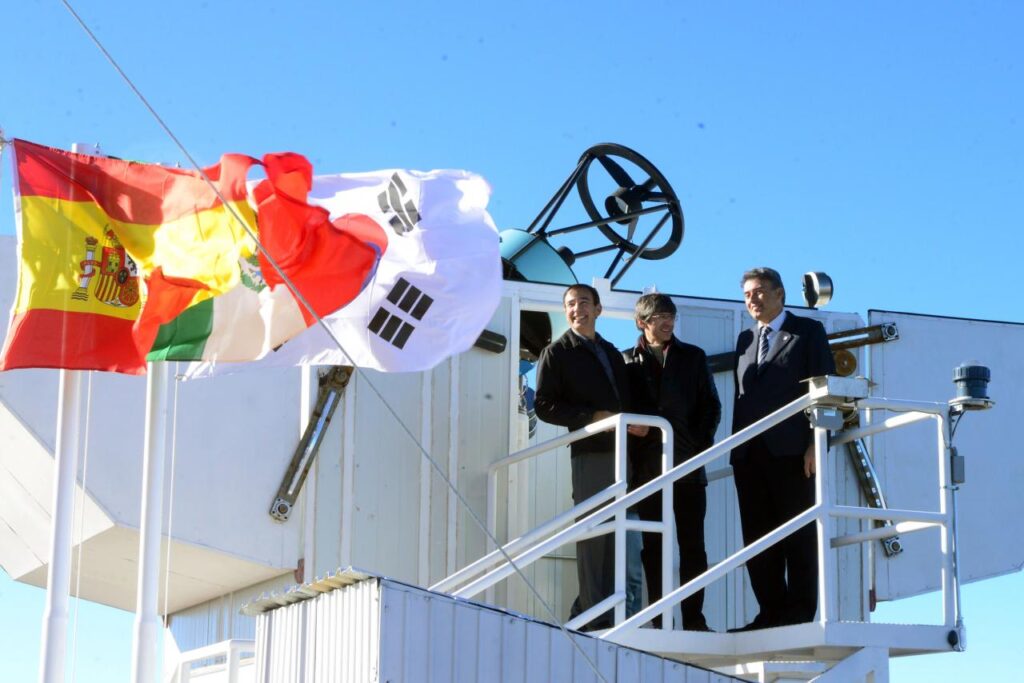The project, led by astronomers from the Instituto de Astrofísica de Andalucía (IAA-CSIC), completes its coverage of the sky in the Northern Hemisphere with the Javier Gorosabel telescope.
Last night, the fifth robotic astronomical station of the BOOTES (Burst Observatory and Optical Sporadic Source Exploration System) network was inaugurated at the National Astronomical Observatory of Mexico, a project led by the researcher Alberto J. Castro-Tirado (IAA-CSIC) which already has two installations in Spain, one in New Zealand and one in China and which is, to date, the most complete network of its kind.
“With BOOTES-5 we complete the deployment of robotic stations in the Northern Hemisphere after Spain (1998-2007) and China (2012), thus forming the first Robotic Network in the three continents (America, Europe and Asia). From now on, it will be possible to carry out uninterrupted observations if the celestial object under study is in a favourable position and the weather conditions allow it,” says Alberto Castro-Tirado (IAA-CSIC).
Alberto Castro-Tirado (right), principal investigator of the BOOTES project, with William Lee, director of the UNAM Institute of Astronomy (centre).
The network will contribute to the study of gamma-ray bursts (GRBs), which are the most energetic events in the universe and are associated with the death of very massive stars. They are usually detected by satellites, which report the burst to the scientific community so that the event can be studied in detail. The existence of a network of very fast pointing robotic telescopes such as BOOTES represents an ideal complement to satellite detection and, in fact, BOOTES will also work on tracking and monitoring high-energy sources simultaneously with space satellites.
This fifth telescope in the BOOTES network will be named the Javier Gorosabel Telescope, in homage to the astronomer who passed away this year and whose work has been internationally recognised for his contributions to the study of gamma-ray bursts, their variants and origins.
“The Javier Gorosabel Telescope (JGT) is the main instrument of the BOOTES-5 astronomical station and its name will forever keep the memory of this distinguished astronomer from Eibar, a member of our scientific team at the Instituto de Astrofísica de Andalucía where he was a Research Scientist and also at the University of the Basque Country, where he carried out his research work as an Ikerbasque Professor,” says Alberto Castro-Tirado (IAA-CSIC).
The inauguration ceremony was attended by representatives of the various scientific bodies, and a moving speech was read out by Miguel de los Toyos, mayor of Eibar, the town where Javier Gorosabel was born.
BOOTES-5 is located at the National Astronomical Observatory in the Sierra de San Pedro Mártir, operated by the Institute of Astronomy of the UNAM. It includes an all-sky camera CASANDRA-5 for continuous monitoring of the celestial sphere, and has been made possible thanks to the support of the Spanish Ministry of Economy and Competitiveness, the National Autonomous University of Mexico and the National Council of Science and Technology.
BOOTES-5 is a collaborative project between the Instituto de Astrofísica de Andalucía (IAA-CSIC), the Instituto de Astronomía de la UNAM and the Sungkyunkwan University of Korea.
Contact:
Instituto de Astrofísica de Andalucía (IAA-CSIC)
Unidad de Divulgación y Comunicación
Silbia López de Lacalle – sll[arroba]iaa.es – 958230532
http://www.iaa.es
http://www-divulgacion.iaa.es
